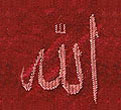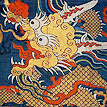|
|
||||||||||||||||||||||
| |
|
|
|||||||||||||||||
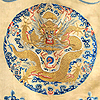 3908-Sold |
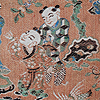 3923-Sold |
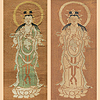 3924 |
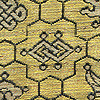 3929 |
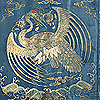 3933 |
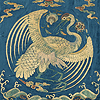 3934 |
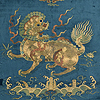 3935 |
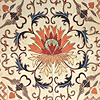 3942 |
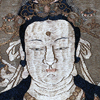 3163 |
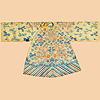 3963 |
 3964 |
 4019 |
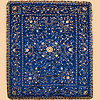 4069-Sold |
 4070 |
 4084 |
 4085 |
An Important Chinese Ming Dynasty Imperial Silk & Gold Brocade 33 Buddha Panel, Circa 1600 Ming Dynasty, 1368 – 1644 A.D Size 85" x 25" Top & Below are Detail Images PROVENANCE: From Collection of Nelson & Happy Rockefeller 33 Buddha In Buddhism, Kuan Yin is a goddess and a bodhisattva. She is sacred in both Chinese and Japanese Buddhism, a goddess of compassion and fertility. Like Mary in the Christian tradition, she is said to aid souls to get to nirvana. She is often depicted holding a child, very much like depictions of Mary and the baby Jesus. She assumes 33 appearances. According to the Lotus Sutra she undergoes 33 transformations to help attain salvation. In Japan she is Gannon and worshippers may take the “Pilgrimage to the 33 Holy Places of Gannon.” Among Taoists there is a belief that the Holy Mountain Wudang is the cradle of their religion. During his reign (1402–1424) the Emperor Zhu Di of the Ming Dynasty ordered the Forbidden City be built, sent out his admiral on six voyages to know his world, and ordered 33 temples built in ten years in the Wudang Mountains, which remain today as a UNESCO site. The Tibetan Book of the Dead has 33 heavens ruled by Indra and 33 ruled by Mara. Indra is accepted in Tibet, China, and Japan as their guardian deity. In India he is depicted riding an elephant with 33 heads and 33 tusks. Mara is the opposite, the Evil one. Zoroastrianism originated in Persia. The principle deity is Ahura Mazda who created the universe in 33 steps. His prophet Zarathustra’s teachings included the relegating of all other spirits, good and bad, to unimportance. His teaching said each individual had free choice of good or evil. Following the righteous path would lead to salvation. His doctrine was anti-ritual and anti-sacrifice, especially in terms of animal sacrifice. He began his teaching at the same age as Jesus. At age 30, Ahura Mazda illuminated him. His teaching mission did not always go well, and he was rejected in his mother’s village, as was Jesus. He lived past the age of 33 all the way to another sacred number, 77. In Chinese Buddhism, Guan Yin is synonymous with the Bodhisattva Avalokitesvara, the pinnacle of mercy, compassion, kindness and love. As the Lotus Sutra relates, the Bodhisattva Kuan Shih Yin, "by resort to a variety of shapes, travels in the world, conveying the beings to salvation."
|
An Important 33 Buddha Textile Panel
|
|||
|
||||
| Back to top |
|
||||||||||||||||||||||||||||||||||||||||||||||||||||
